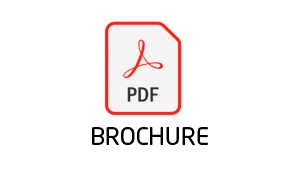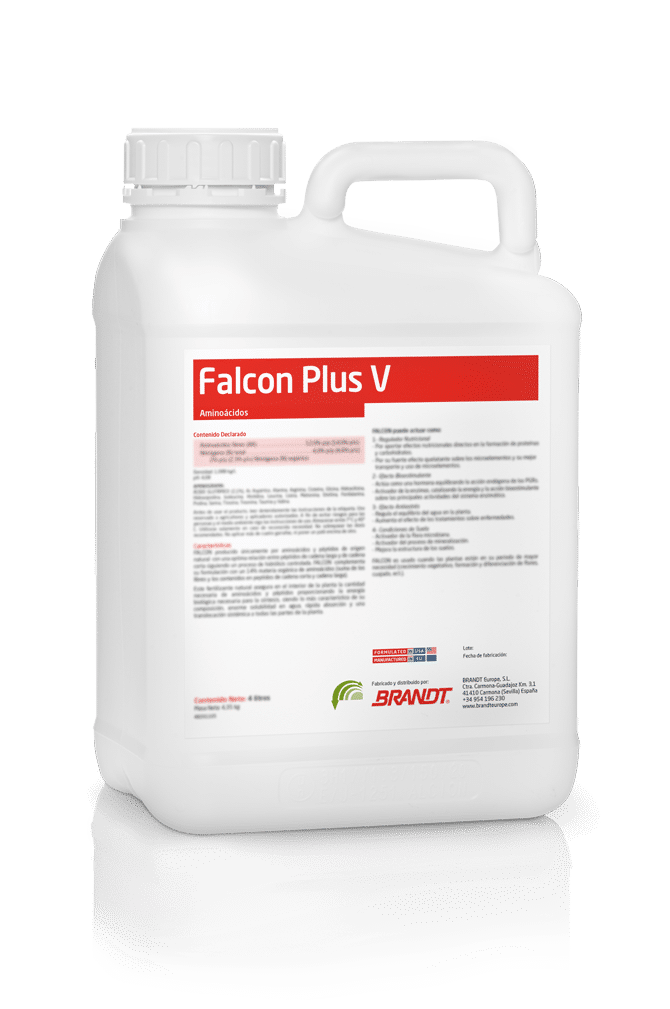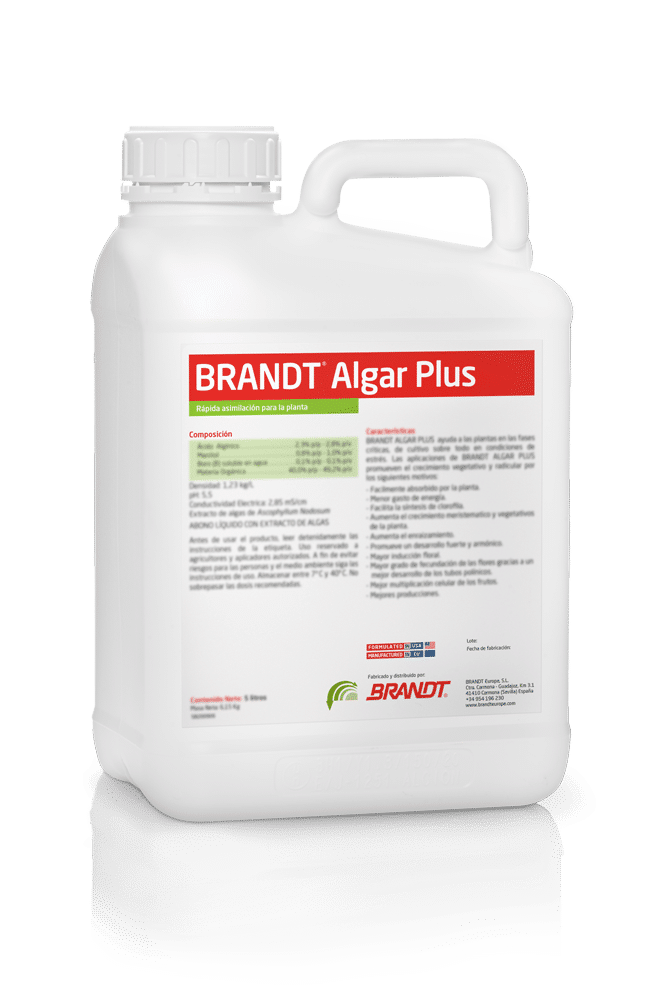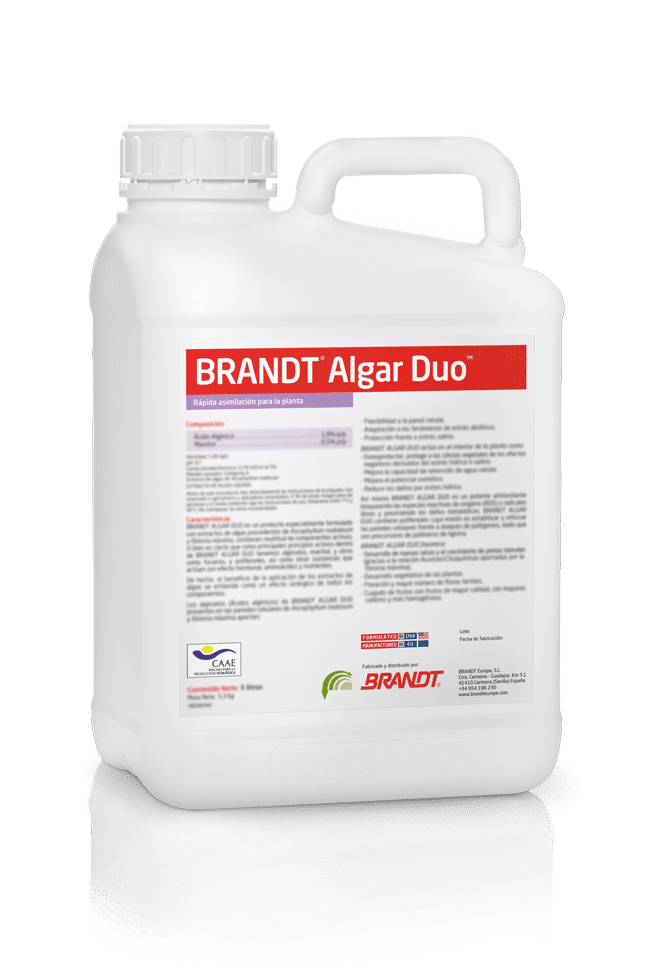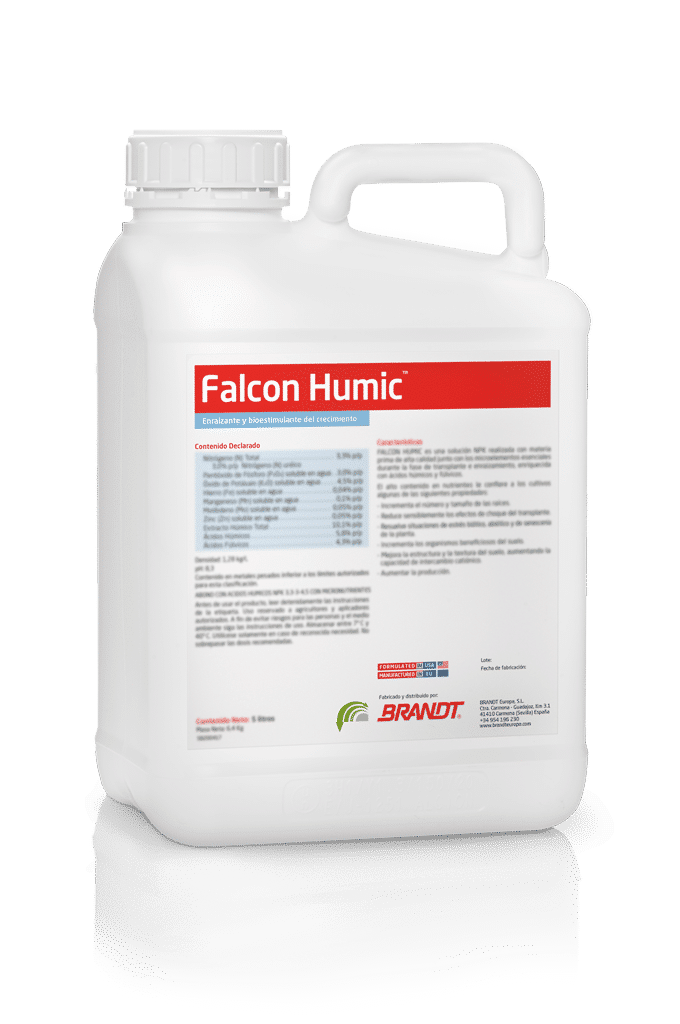BRANDT® Amino GH ZMF
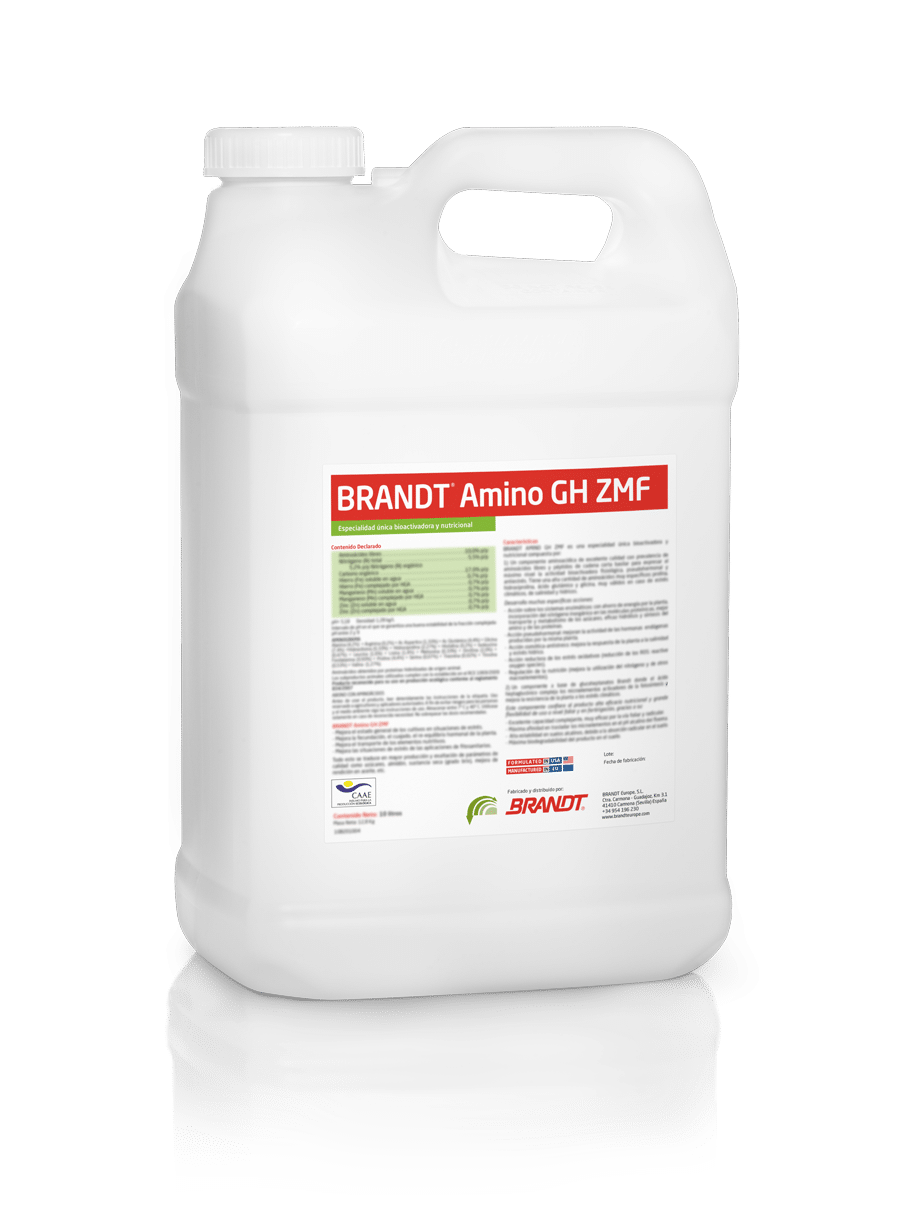
BRANDT® AMINO GH ZMF is a unique bio-activating and nutritional specialty product composed of a high-quality amino acid component with a prevalence of free amino acids and basal short-chain peptides to express the physiological, pseudo-hormonal and anti-stress bio-activating activity at the highest level.
It contains a high amount of very specific amino acids: proline, hydroxyproline, glutamic acid and glycine, to protect crops from climatic, saline and hydric stress.
It also contains a component based on BRANDT® glucoheptonates where the heptagluconic acid is complexed with the photosynthesis activating microelements, increasing the plant's resistance to climatic stress.
BRANDT® AMINO GH ZMF is a unique bio-activating and nutritional specialty product composed of:
1. A high-quality amino acid component with a prevalence of free amino acids and basal short-chain peptides to express the physiological, pseudo-hormonal and anti-stress bio-activating activity at the highest level. It contains a high amount of very specific amino acids: proline, hydroxyproline, glutamic acid and glycine, which are highly effective in the case of climatic, saline and hydric stress.
It develops several enzymatic actions:
- Action on the enzymatic systems: It provides energy savings to the plant, the incorporation of inorganic nitrogen in protein molecules, improved transport and metabolism of sugars and efficient hydrolysis and synthesis of amino acids and proteins.
- Pseudo-hormonal action: It improves the activity of the endogenous hormones produced by the plant itself.
- Osmotic and anti-stress action: It improves plant response to salinity and hydric stress.
- Oxidative stress reducing action: It reduces ROS (reactive oxygen species).
- Nutritional regulation: It improves the utilization of nitrogen and other macroelements.
2. A component based on BRANDT® glucoheptonates where the heptagluconic acid is complexed with the photosynthesis activating microelements, increasing the plant's resistance to climatic stress.
This component gives the product high nutritional efficacy and great flexibility of use at foliar level and in fertigation, thanks to its:
- Excellent complexing capacity, which is very effective by both foliar and root application.
- Maximum affinity in transferring microelements in the alkaline pH of the phloem.
- High stability in alkaline soils, due to root absorption in the soil.
- Maximum product biodegradability in the soil.
- Advantages
- Crops
- Applications and use
- Composition
- Nutritional Composition
- Sheets
Advantages
- Excellent complexing capacity, which is very effective by both foliar and root application.
- Maximum affinity in transferring microelements in the alkaline pH of the phloem.
- High stability in alkaline soils, due to root absorption in the soil.
- Maximum product biodegradability in the soil.
- Action on the enzymatic systems: It provides energy savings to the plant, the incorporation of inorganic nitrogen in protein molecules, improved transport and metabolism of sugars and efficient hydrolysis and synthesis of amino acids and proteins.
- Pseudo-hormonal action: it improves the activity of the endogenous hormones produced by the plant itself.
- Osmotic anti-stress action: it improves plant response to salinity and hydric stress.
- Oxidative stress reducing action: It reduces ROS (reactive oxygen species).
- Nutritional regulation: It improves the utilisation of nitrogen and other macroelements.
Crops
Applications and use
- Citrus fruit trees: Apply to the vegetative beginning until pre-flowering and setting before falling fruits at a dose of 200-400 cc/hl of water.
- Olive trees: Apply in pre-flowering, setting and end of stone hardening at a dose of 200-400 cc/hl of water.
- Pome fruit trees: Apply from the first leaves to the stage of swollen buds and to the setting at a dose of 200-300 cc/ hl of water.
- Stone fruit trees: Apply to the setting and hardening of the stone at a dose of 150-250 cc/ hl of water.
- Strawberry: Apply in post-transplantation, repeat at 15 days and in pre-flowering at a dose of 200-250 cc/ hl of water.
- Blueberry and raspberry: Apply in vegetative development, in pre-flowering and setting at a dose of 200-250 cc/ hl of water.
- Vine, table grapes: Apply from budding to pre-flowering and from setting to formation at a dose of 200-250 cc/ hl of water.
- Kaki: Apply from the beginning of vegetative activity to the floral buds and in the setting and/or after the fall of fruits at a dose of 200-300 cc/hl of water.
- Outdoor vegetables: Solanaceae (tomato, pepper, aubergine) and cucurbits (melon, watermelon, cucumber, courget), carry out from 2-4 applications from the first vegetative phases to pre-flowering and from setting to growth of the fruit at a dose of 200-300 cc/ hl of water.
- Leave vegetables (salad, chard, spinach): Apply in the first leaves and at the beginning of the development of the edible parts at a dose of 150-250 cc/hl of water.
- Greenhouse vegetables: Carry out from 2-4 applications from the first vegetative phases to pre-flowering and from setting to growth of the fruit at a dose of 150-250 cc/ hl of water.
- Cereals (wheat, oats, barley, rye): 1-2 applications at the rate of 3-5 L/ha.
- Rice: In cases of salinity apply 2-3 times in 2-3 leaves to the tillering, when the panicle is approximately 2 cm and in pre-flowering.
Preparation in the tank
- Fill the tank to 1/3 to 2/3 full with water.
- Add the additives, if provided, and stir for a few minutes.
- If phytosanitary products are used in the application, add and stir again for a few minutes.
- At the end add the recommended amount of BRANDT® AMINO GH ZMF and stir until completely mixed.
- To finish, fill the container with water and shake before starting the application.
Composition
- Free amino acids: 10.0 % w/w
- Total Nitrogen (N): 5.5 % w/w
- Organic nitrogen (N): 5.2 % w/w
- Organic carbon: 17.0 % w/w
- Water-soluble iron (Fe): 0.7 % w/w
- HGA-complexed iron (Fe): 0.7 % w/w
- Water-soluble manganese (Mn): 0.7 % w/w
- HGA-complexed Manganese (Mn): 0.7 % w/w
- Water-soluble Zinc (Zn): 0.7 % w/w

